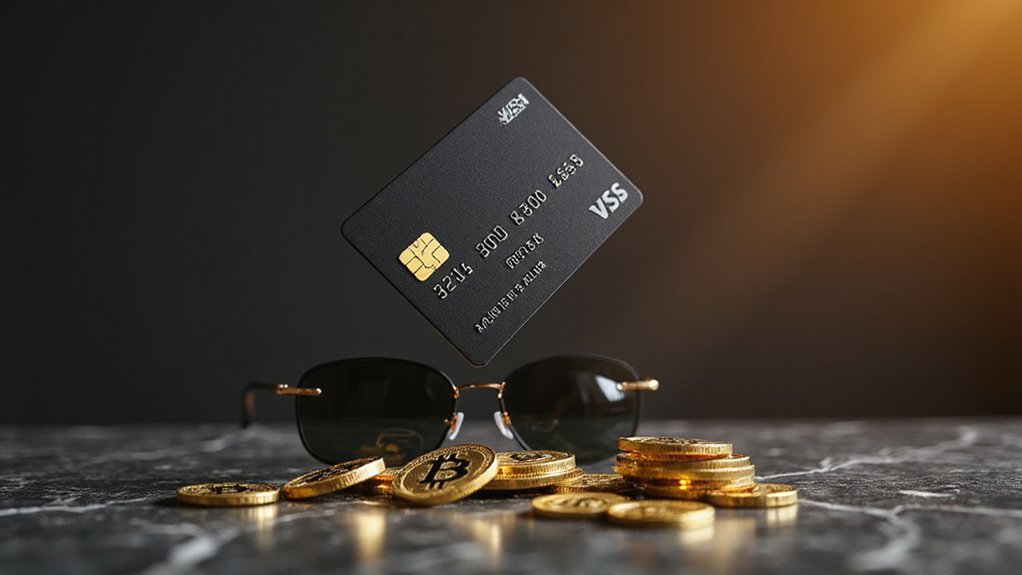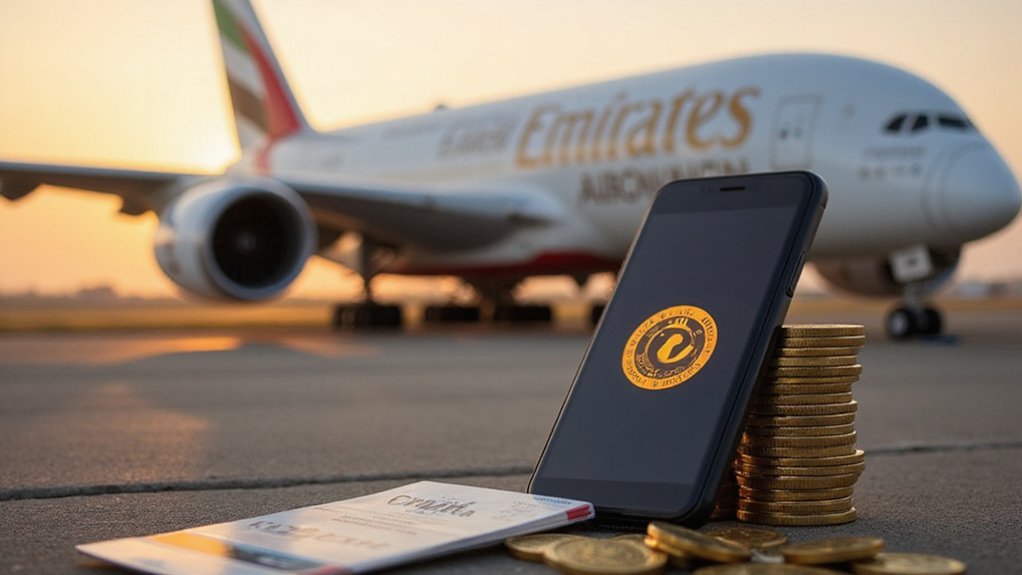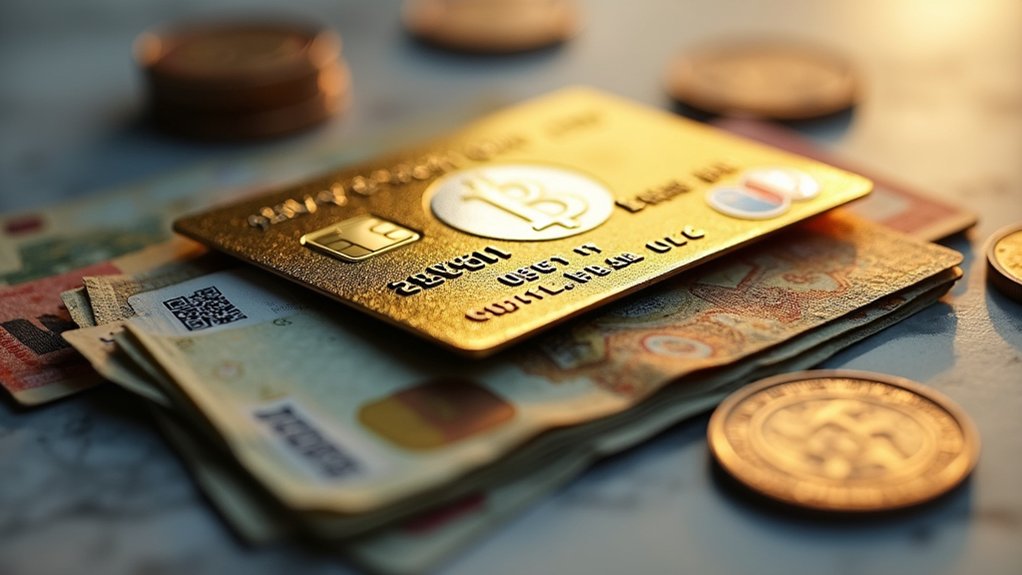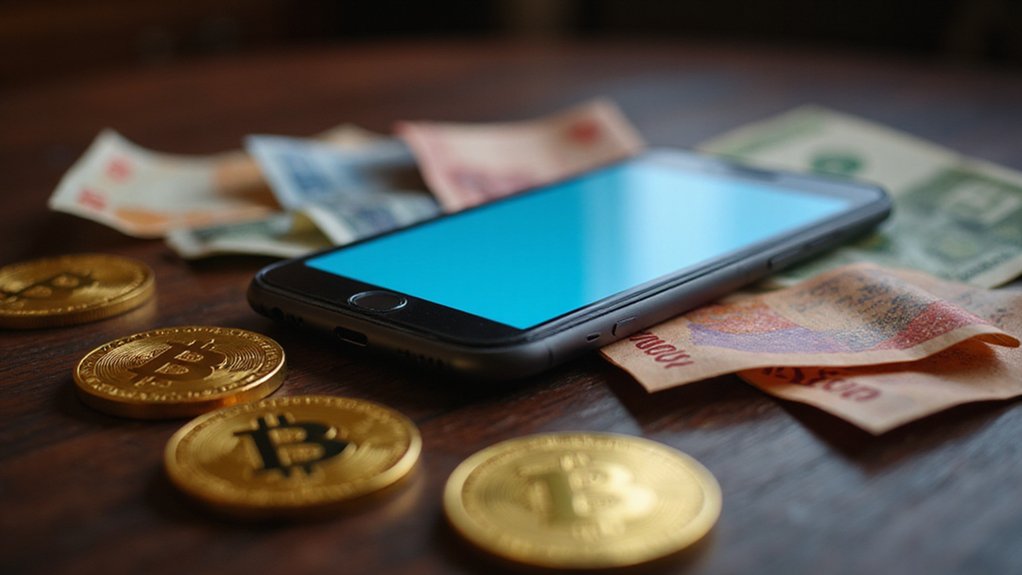A curious financial hybrid has emerged from the intersection of traditional banking and digital asset enthusiasm, promising to bridge the gap between cryptocurrency holdings and everyday commerce. These crypto credit cards—growing from a $1.53 billion market in 2024 to a projected $3.58 billion by 2029—represent perhaps the most pragmatic attempt yet to make digital assets genuinely useful for mundane purchases like coffee and groceries.
The pragmatic marriage of cryptocurrency volatility and grocery store convenience—financial innovation or elaborate payment processing theater?
The mechanics are elegantly straightforward: users link their crypto wallets to cards that automatically convert digital assets into fiat currency at the point of sale. This real-time conversion technology eliminates the cumbersome process of manually exchanging Bitcoin for dollars before spending, though one might wonder whether such convenience truly justifies the inherent volatility risks of holding cryptocurrency reserves. While these cards operate within traditional payment rails, the underlying cryptocurrency ecosystem increasingly draws from smart contracts that automatically execute transactions when predetermined conditions are met.
What makes these products particularly magnetic is their rewards structure, which flips traditional cashback incentives on their head by offering cryptocurrency returns instead of percentage points. For crypto enthusiasts, earning Bitcoin while purchasing mundane items creates a psychologically satisfying feedback loop—every transaction becomes a small investment in their digital asset portfolio rather than mere consumption.
The market’s 18.8% compound annual growth rate reflects broader trends toward cashless transactions and blockchain integration, but also reveals something more fundamental about consumer behavior. Traditional payment networks have embraced these partnerships not from altruistic support for decentralized finance, but because they recognize an inevitable shift in how people conceptualize money itself. This transformation is further accelerated by growing distrust in traditional finance systems, which has contributed significantly to cryptocurrency’s rising popularity among consumers seeking alternatives.
Geographic adoption varies considerably, with regulatory environments creating natural boundaries for expansion. North American and European markets lead development, while Asian markets present both opportunities and compliance complexities that require careful navigation. The DeFi integration capabilities are driving significant market expansion as partnerships with decentralized finance platforms offer additional benefits to cardholders.
The fraud detection capabilities leverage blockchain’s inherent transparency, creating security measures that possibly exceed traditional credit card protections. Multi-currency wallet support allows users to diversify their crypto holdings while maintaining spending flexibility—a feature that appeals to both serious cryptocurrency investors and casual adopters seeking portfolio experimentation.
Whether this represents genuine financial innovation or merely elaborate marketing wrapped around existing payment infrastructure remains debatable, but consumer adoption suggests the appeal transcends mere novelty.









